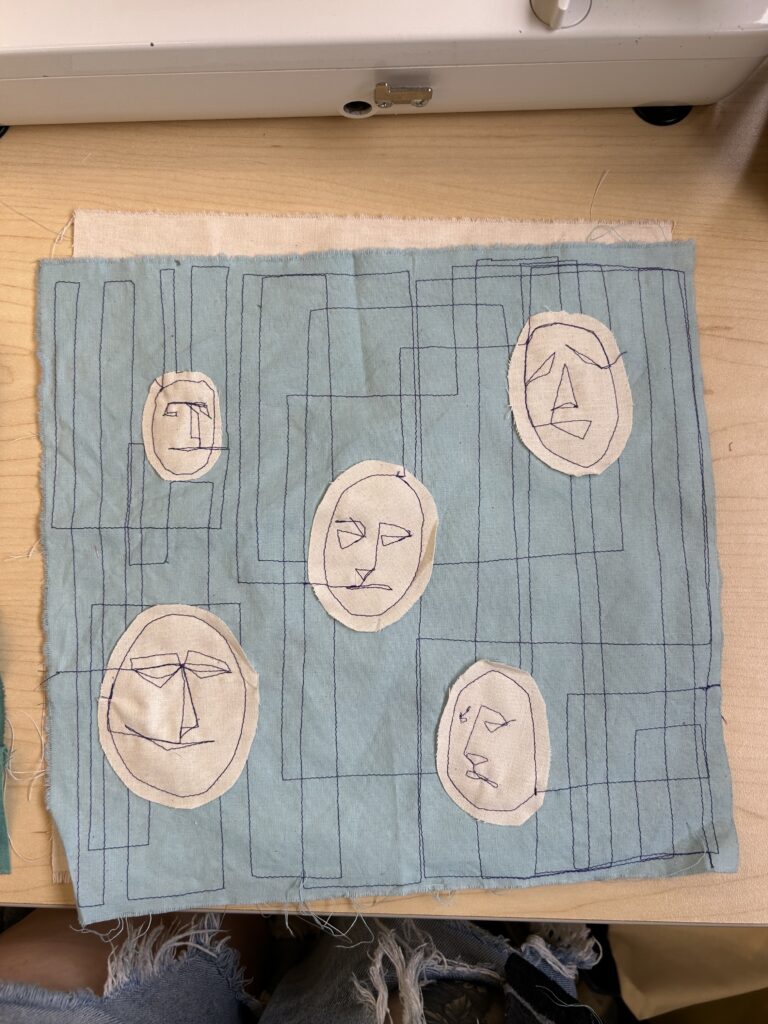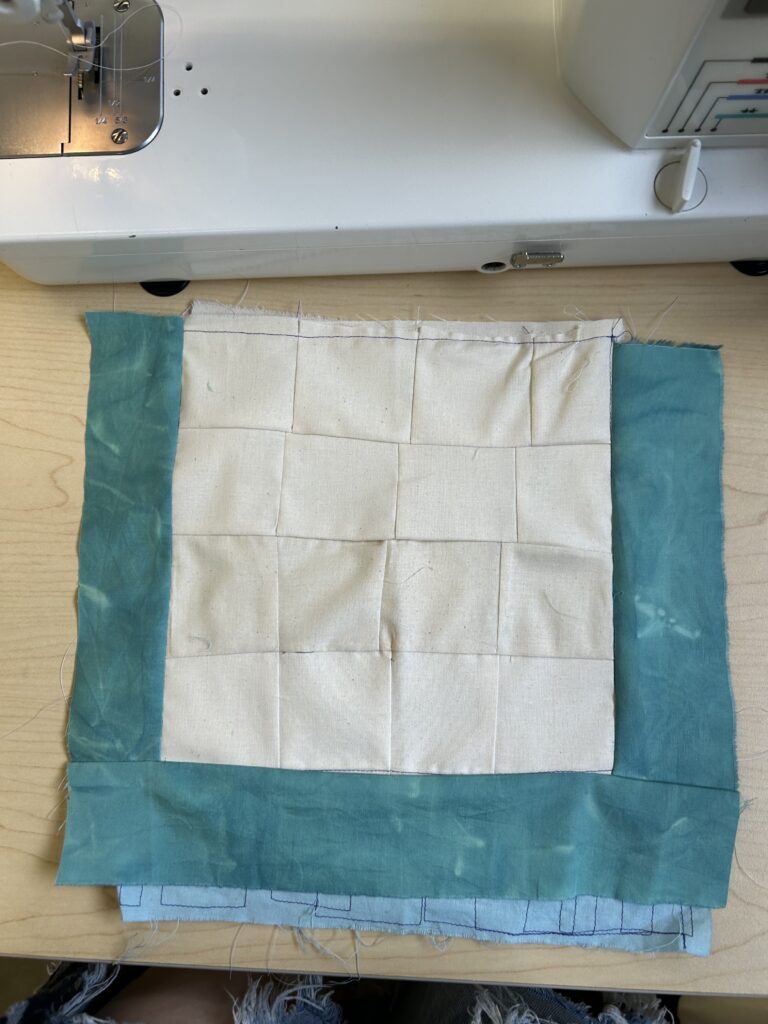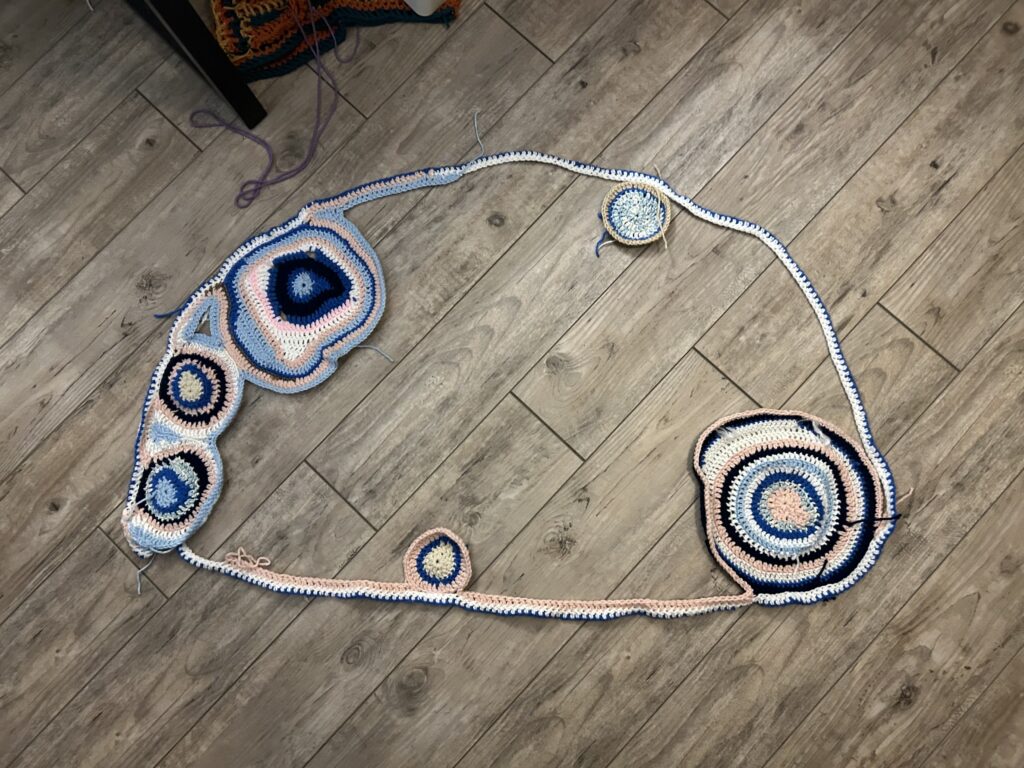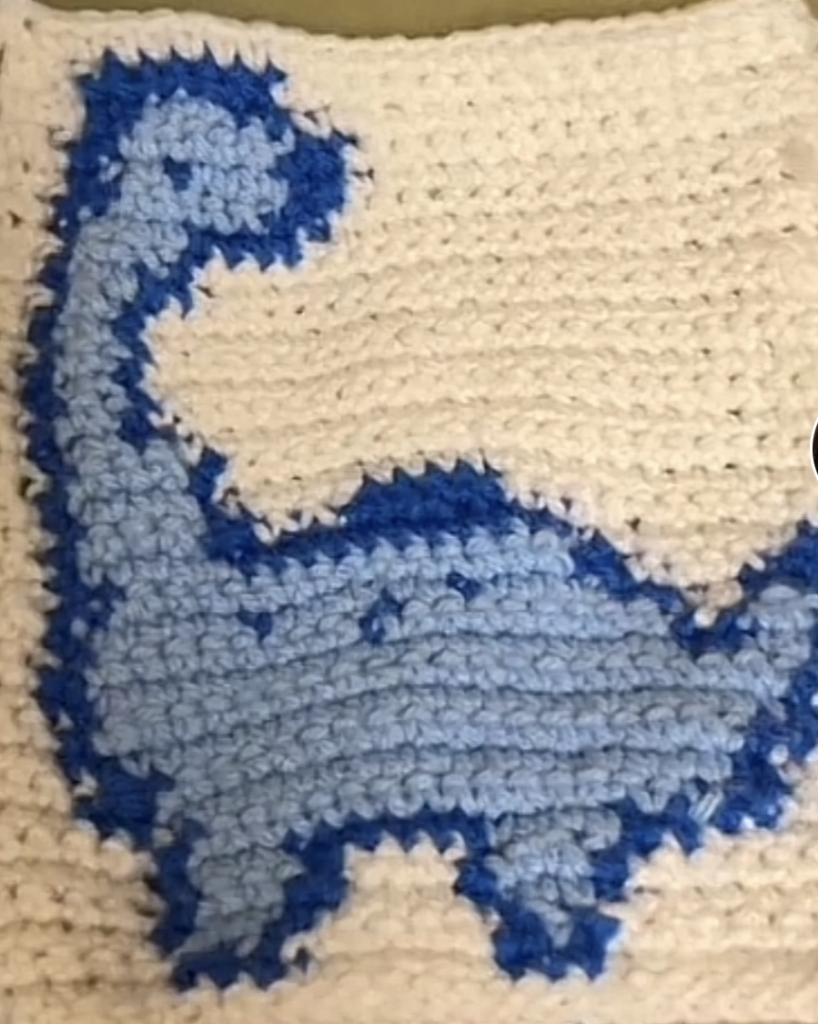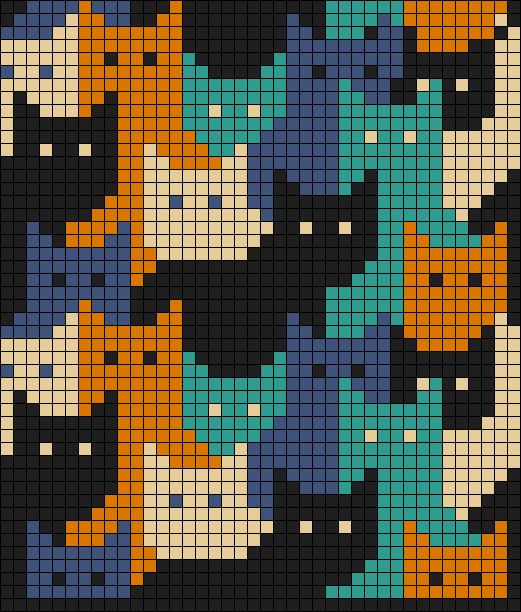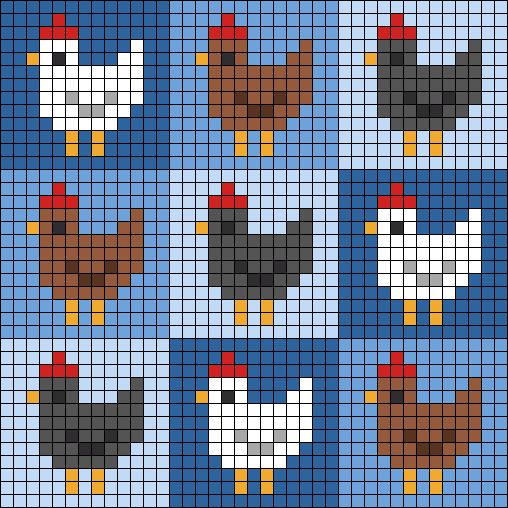Hello everyone!
Due to technical difficulties, I am posting this a few days late, but nonetheless, I have fibers for you!!
This week I worked on crocheting a opossum. I am working on crocheting things for myself, as I usually make my crafts for someone else. I thought it would be cuter and silly to work on a crochet opossum. I didn’t follow a pattern for this one, I have just been free handing him as I go. I am stuffing him with fluff from an old pillow that I don’t wan to use anymore. I think that when it is finished it will be super cute. I will upload the results next week!
I started off this little guy with ch 4 (starting at the nose) , joining with sl st to make a ring. I then crocheted 6 sc and then kind of just kept increasing whenever I felt like he needed to get larger around. When I got to the spot where his tail will begin, I started to decrease my stitches until I get a decently opossum tail sized hole. I then front loop crocheted once around, and then went back to single crocheting the rest of his tail. I stopped when I felt it was long enough. I stuffed him so much he’s extremely stiff. Stay tuned for the rest of his transformation this upcoming Friday! I have been working on some really cool fibers projects that I am super excited to show everyone when they are finished.
See you next week!!
Marissa




